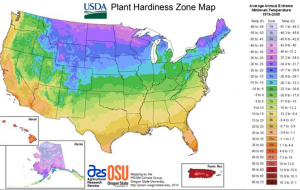All over the United States, spring flowers such as daffodils and crocuses began blooming nearly a month ago due to an unseasonably warm winter. Some of my friends from many parts of the country have been mentioning how beautiful their gardens are and enjoying the warm weather. Even my family and friends from the Mid-Atlantic region have been sending photos showing off their beautiful home gardens.
Many think it’s really nice to see green grass, budding trees, and flowers in bloom in late February, as it’s a spirit lift after a couple of months of cloudy skies and cold rains or snows. However, these early bloomers are a bit problematic, as gardens aren’t given a good length of time to be dormant. Dormancy is important to plants, because it gives them a chance to rest. By resting, it allows the plant to conserve the energy that they will need for growth and development. If spring continues to come early, plants may think that spring is here to stay even though there is the potential for frost. Growers in the Northeast of the United States are worried that if freezing weather returns overnight their already budding crops, such as apples, may not survive. Additionally, pollination may not occur as easily because insects that pollinate plants may not yet be out of hibernation. This would be a problem because plants will already be past the time they are primed for pollination when insects emerge.
The last decade has been so warm that the United States Department of Agriculture in coordination with Oregon State University has released a new growing chart, which provides instructions on when to plant based on location. This is the first time it has been updated in nearly 22 years. This new map is more accurate and detailed than previous versions and can be found on the USDA’s website.
It’s not only phenology that is being affected, but also hydrology too. White Bear Lake in Minnesota (USA) finished its spring thaw early – so early in fact that it broke the early thaw record set in 2000 by two days on March 19. Another nearby lake, Lake Waconia, went ice-free 25 days earlier than average, and broke the record by six days. With this record-breaking melt, frogs and migratory birds have been heard and seen well ahead of normal as well.
What is the cause of this? Some scientists point to climate change. Some of it can also be attributed to climate patterns that were discussed in a previous blog post about Europe’s cold weather. However, it is too early to tell if this is going to continue into the future. What is important is to remain diligent in watching the trend of bud burst and ice melt over the course of many years. Using GLOBE protocols can aide your school in keeping track of these seasonal changes at your location!
Are you located in an area that is having an early spring? Send us an email or add a comment to let us know about what signs of spring are happening near you!
-Jessica Mackaro



i always like your posts because you have such a good way of expressing yourself, and this is a virtue in these days
very well, thank you
thank you so much!